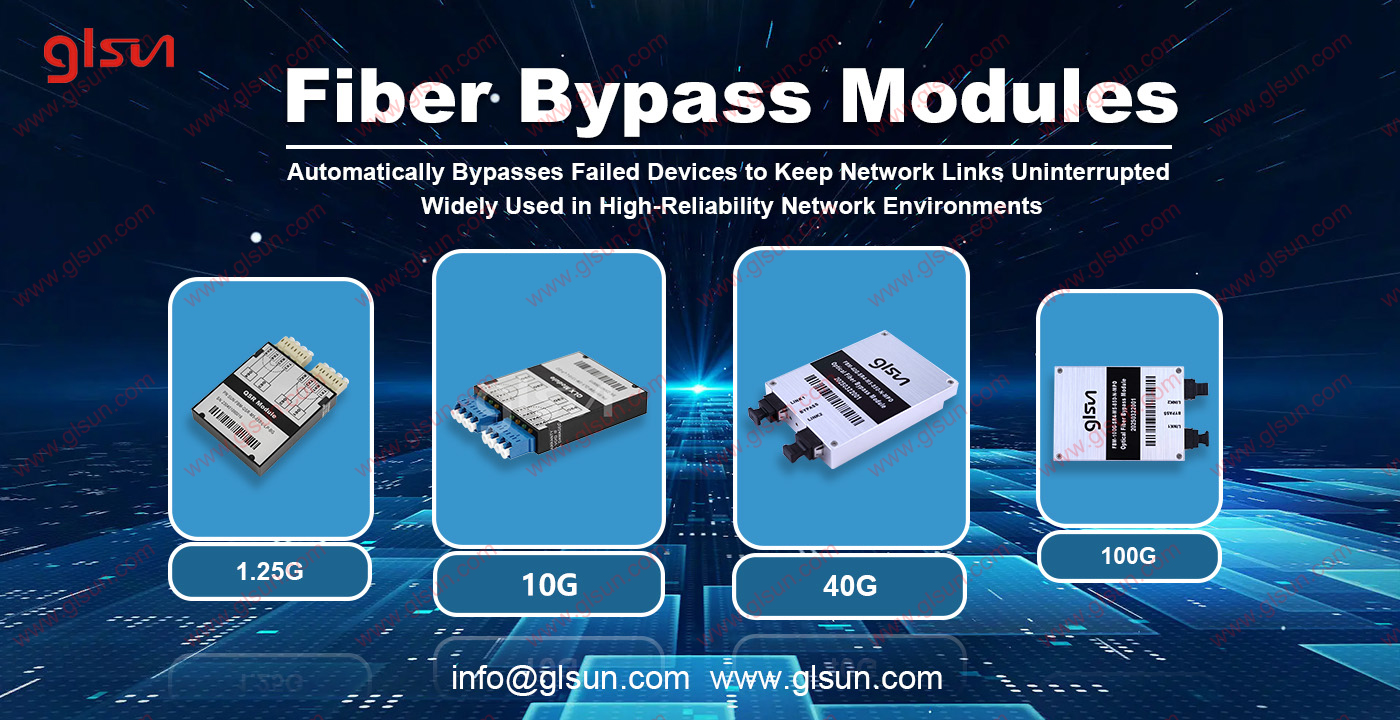How Fiber Bypass Modules Enhance Network Resiliency?
2025-07-05
Modern network architectures frequently deploy in-line appliances—such as firewalls, intrusion prevention systems (IPS), traffic analyzers, and load balancers—for packet inspection, monitoring, or policy enforcement. While these devices are essential for performance and security, they also present a unique risk: if an in-line device fails, the entire data path may be interrupted.
The causes of such failures are varied—power loss, software crashes, hardware faults, or scheduled maintenance—but the impact is often the same: network downtime, data loss, or even compliance violations.
This is where Fiber Bypass Modules become critical. They are designed specifically to eliminate this single point of failure and ensure uninterrupted service delivery.
A Fiber Bypass Module is a passive or semi-active optical switching device that is integrated into the optical path between the network and an in-line appliance. Under normal conditions, it allows traffic to flow through the appliance. When a fault is detected—such as a loss of signal (LOS), power failure, or manual bypass trigger—it automatically reroutes the traffic, bypassing the in-line device altogether.
Key Functions of Optical Bypass Modules:
> Automatic failover: Redirects traffic instantly when an appliance fails.
> Low insertion loss: Ensures minimal signal degradation.
> Fast switching time: Transition between normal and bypass modes in microseconds.
> Bi-directional transparency: Maintains protocol and data integrity.
> Fail-safe design: Supports both "fail-open" and "fail-closed" behaviors depending on the security policy.
By leveraging these capabilities, Optical Bypass Modules enable networks to operate smoothly even when critical appliances go offline.

Let's dive deeper into the specific ways Fiber Bypass Modules contribute to a robust, fault-tolerant network design:
1. Non-Stop Network Operations
In the event of equipment failure, an Optical Bypass Module ensures that live traffic continues to flow through the network without disruption. This is particularly valuable in sectors like finance, healthcare, and telecom, where latency or downtime can result in financial loss or safety risks.
2. Supports Maintenance Without Downtime
Network administrators often need to update, patch, or replace in-line devices. Without a bypass module, this requires taking the entire link offline. With a Fiber Bypass Module in place, traffic can be rerouted temporarily, allowing maintenance without disrupting live services.
3. Reduces Risk of Network Congestion and Packet Loss
When in-line appliances crash unexpectedly, they can act as a traffic sinkhole, causing bottlenecks or dropped packets. An Optical Bypass Module prevents such issues by instantly cutting the appliance out of the circuit, preserving the integrity of the data flow.
4. Essential for High-Availability Designs
Redundancy is a cornerstone of network resilience, and Fiber Bypass Modules align perfectly with this principle. When paired with dual-path or load-balanced architectures, they offer an added layer of fault isolation, ensuring that no single failure takes down the system.
5. Enhances Cybersecurity and Compliance
By enabling precise control over fail-open or fail-closed behaviors, Optical Bypass Modules also enhance network security. For example, in a secure environment, a bypass module can be configured to block traffic in the event of failure (fail-closed), ensuring that data does not flow unchecked when monitoring tools are offline.
Not all Fiber Bypass Modules are created equal. When evaluating solutions, consider the following:
> Wavelength and bandwidth support (e.g., 1G/10G/40G/100G)
> Insertion loss and return loss specifications
> Switching speed
> Control options: automatic, manual, or remote (via SNMP or Web GUI)
> Compatibility with existing fiber infrastructure (single-mode or multi-mode
At GLSUN, we offer a full range of Optical Bypass Modules engineered for both high-performance and reliability. Our modules are suitable for deployment in any optical network environment, with customizable parameters to fit unique application requirements.

As networks evolve toward SDN (Software Defined Networking) and NFV (Network Functions Virtualization), the integration of intelligent bypass mechanisms is becoming more common. Smart Fiber Bypass Modules now support dynamic status reporting, remote configuration, and integration into centralized management systems.
In the near future, we expect Optical Bypass Modules to play a more active role in network self-healing, automated rerouting, and AI-based fault prediction, making them even more integral to resilient network architectures.
In the pursuit of resilient network design, Fiber Bypass Modules offer a simple yet powerful solution. They eliminate the risk posed by in-line device failures, ensure service continuity, and enable flexible operations—all while maintaining low latency and minimal signal degradation.
For enterprises, telecom operators, and critical infrastructure providers, deploying Optical Bypass Modules is not just a best practice—it's a strategic necessity.







